Call Now!
Torrance Office: +1 (424) 360-0155

A hernia is a weakened area of normally firm muscle that allows tissue or an organ to bulge or squeeze through. Hernias primarily affect your abdomen, diaphragm and intestines.
There are various types of hernia in adults. While most hernias can be controlled by making lifestyle changes (losing weight, eating foods that do not promote heartburn, exercising), some enlarge to the point they require surgery to avoid causing medical complications. Hernia repair involves minimally invasive hernia surgery that reinforces muscle strength by supporting muscles with a mesh-like material. These are the most common types of hernia in adults.
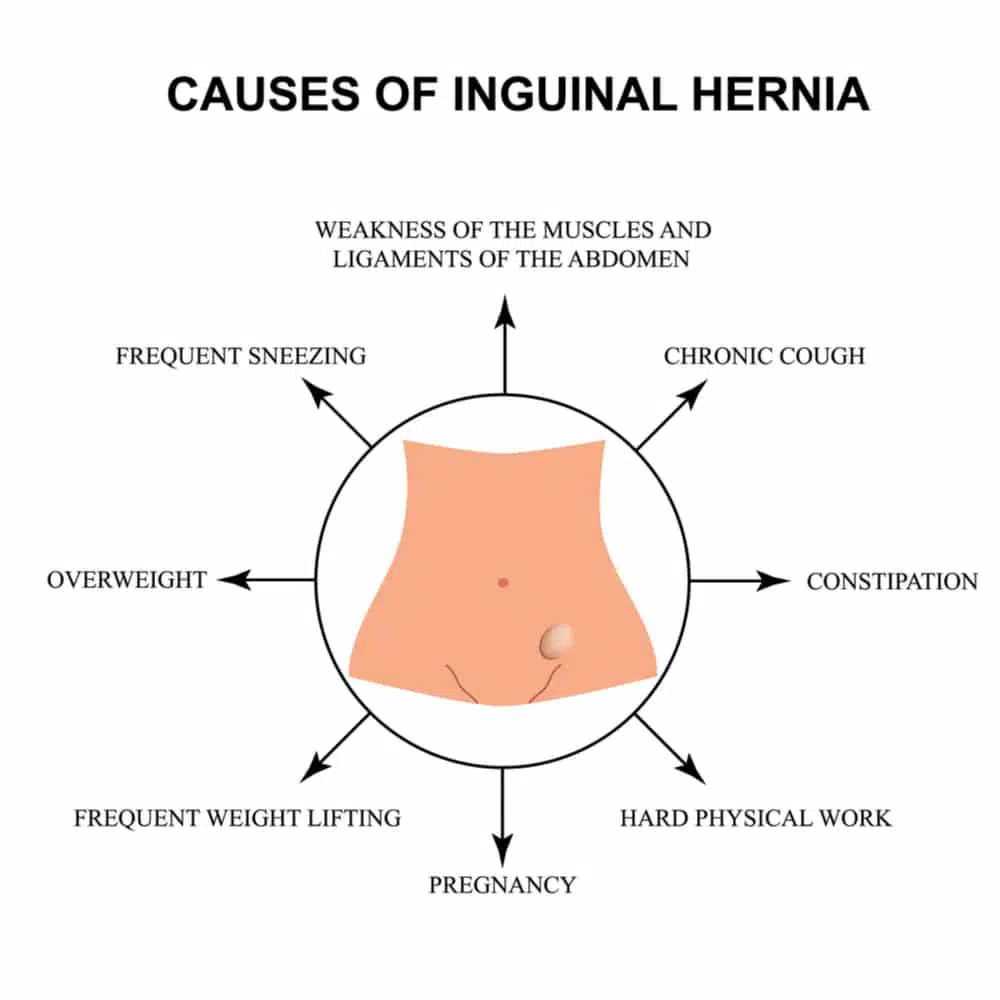
Three out of four hernias are groin hernias. Inguinal hernias happen when a portion of the intestines pushes through weak muscles in your lower abdomen. More men than women are diagnosed with groin hernias.
If you have an inguinal hernia, you may notice a lump emerging where your groin and thigh come together. The lump often disappears when you lie down but coughing, standing or straining to lift something will force it to become visible again.
Generally, a groin hernia doesn't need invasive hernia treatment if you watch your weight, eat right and avoid lifting heavy objects. However, hernia surgery may be necessary if the portion of intestine poking through the muscle wall has its blood supply restricted.
Symptoms of a hernia emergency include fever, severe pain, vomiting and discoloration of the hernia lump.

More common in women over 50 than men, femoral hernias bulge in a different part of the groin--the femoral canal. If a femoral hernia is visible, you might see a lump around the crease of your groin or encroaching on your upper thigh.
A femoral hernia is sometimes mistaken for a groin hernia so diagnostic scans may be necessary to accurately diagnose the hernia.
If you have a femoral hernia, you will need your hernia doctor to monitor the hernia regularly. Although they do not always cause discomfort, a femoral hernia can provoke complications such as intestinal obstructions, strangulation and gangrene.
In addition, femoral hernias are often responsible for cases of small bowel obstruction.
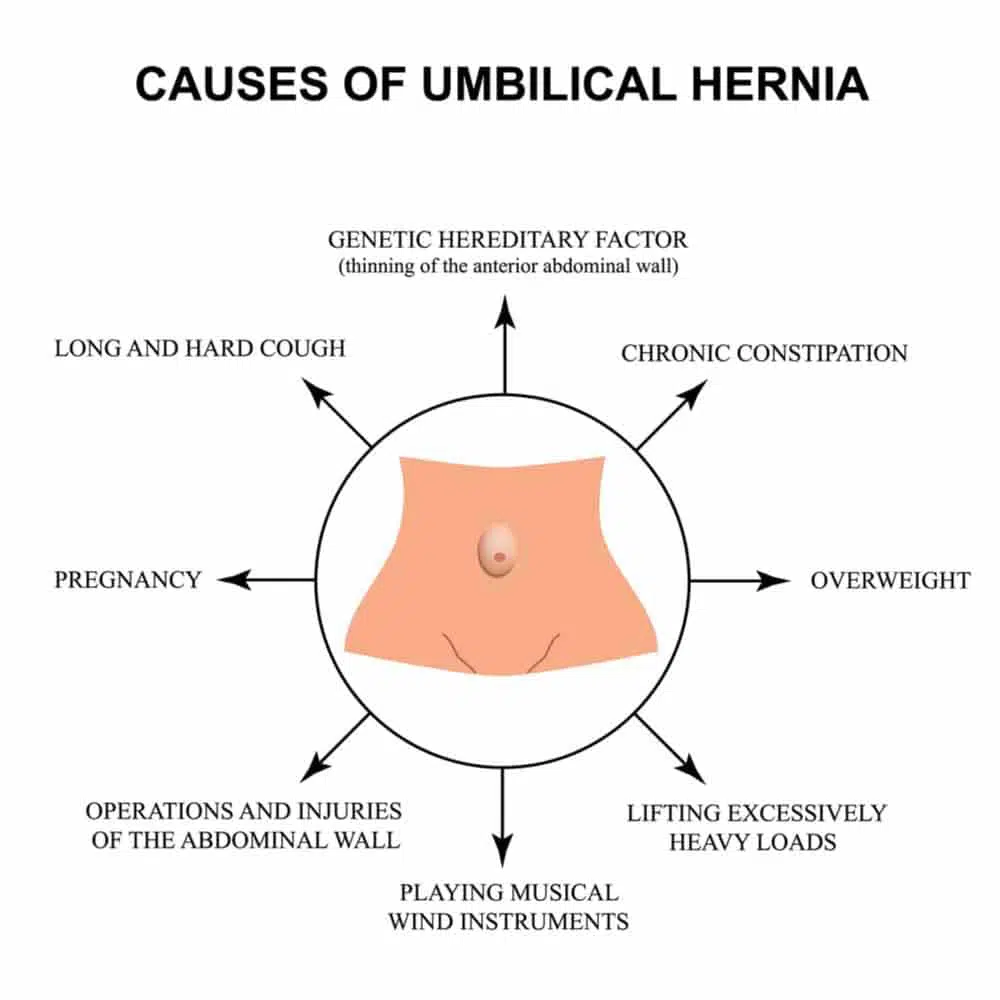
More common in premature newborns and babies less than six months old, umbilical hernias can also affect adults when a portion of the intestine or fat push through muscles surrounding the naval. Most umbilical hernias do not cause pain.
You may be able to see an umbilical hernia in babies in or near the belly button. Umbilical hernias affecting babies usually resolve themselves by the time the child is one year old. Rarely do they need hernia treatment.
Adults with umbilical hernias typically have hernia surgery just to get rid of the bulge. They do not cause medical problems.
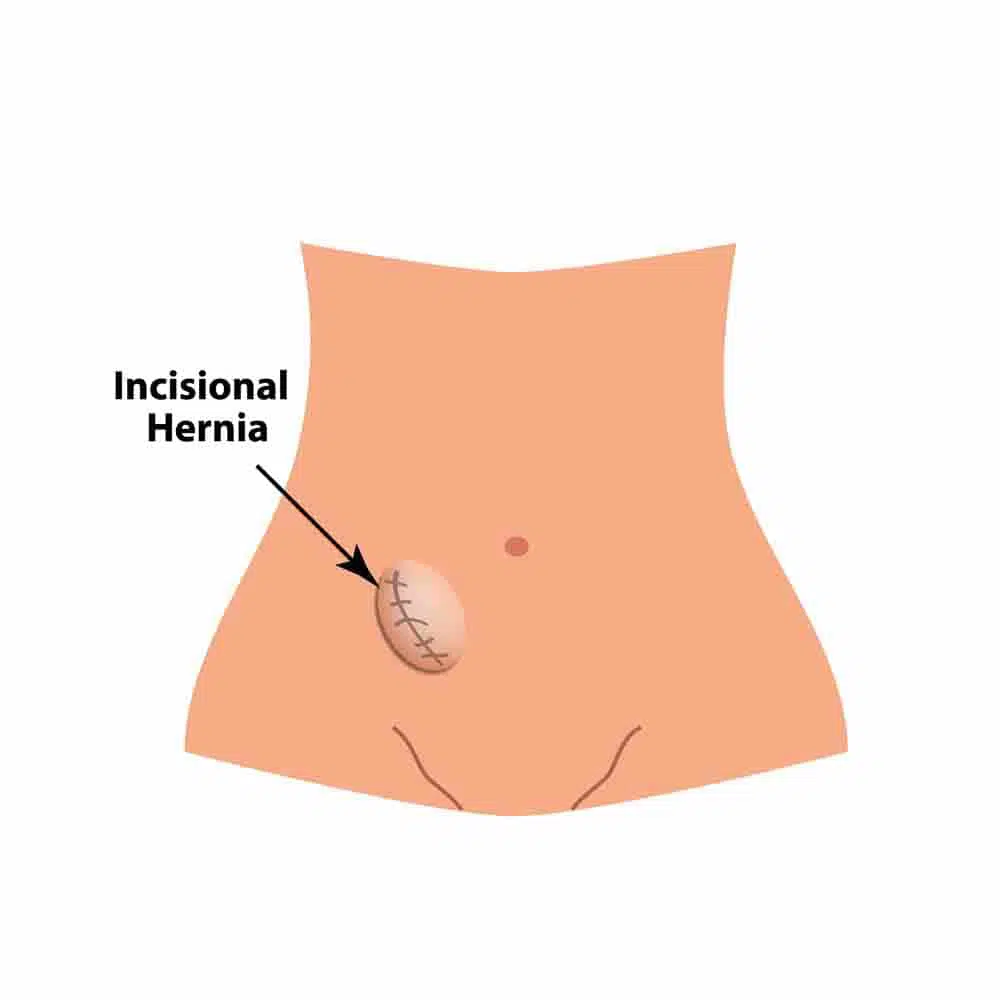
An incisional hernia does not develop on its own. Instead, this type of hernia occurs after you have a surgery requiring your surgeon to make an opening in your abdomen. When tissues poke through an abdominal incision that isn't completely healed, you may be diagnosed with an incisional hernia. Most incisional hernias do not emerge for three to six months after surgery.
To reduce your risk of an incisional hernia, avoid gaining weight or placing excessive stress on stomach muscles.
Hernia repair for an incisional hernia involves another surgery to push tissues back into their proper positions.
Epidural steroid injections aren't for everyone.
You must be able to lie flat on your stomach for the procedure. Pregnancy, diabetes, heart failure, and NSAID use are all potential contraindications. You might experience bleeding, headaches, infection, and a temporary increase in your pain as side effects.
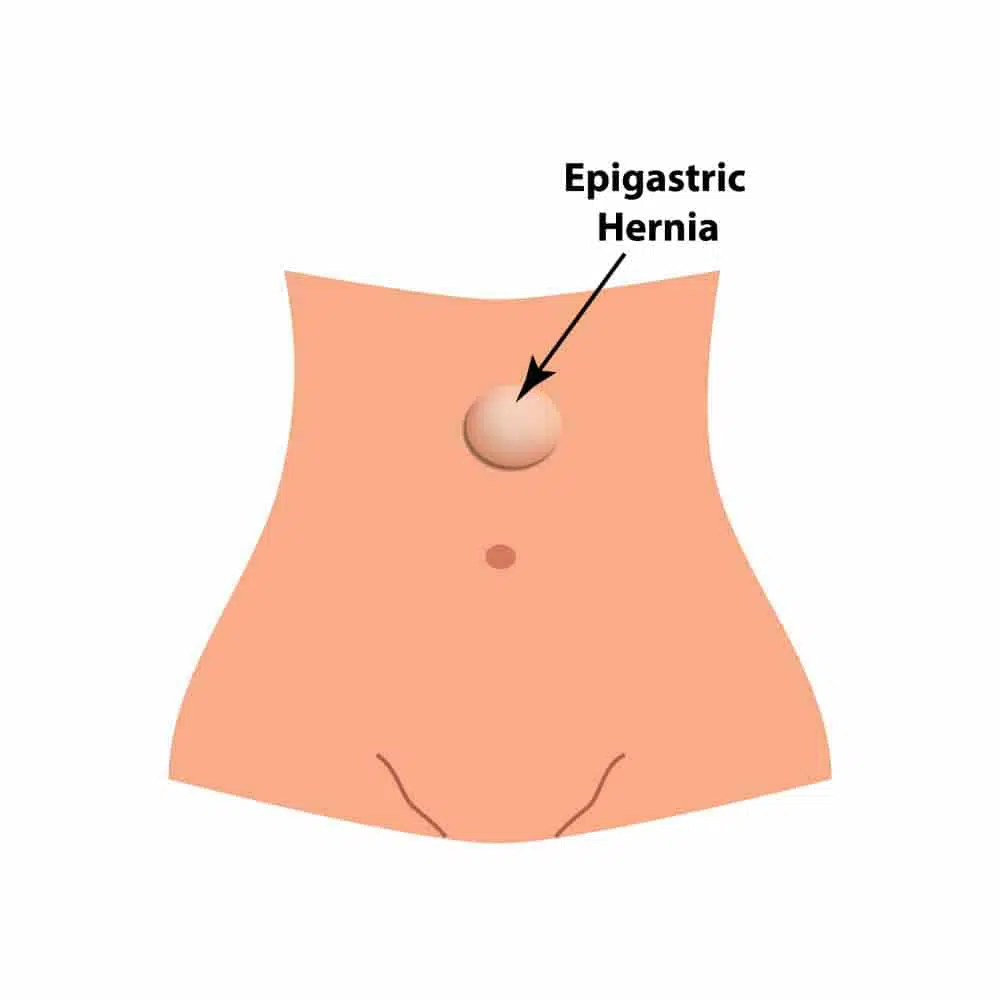
Often misdiagnosed as an umbilical hernia, an epigastric hernia involves fat pushing through your abdominal wall, especially the part of the wall around the belly button.
Epigastric hernias can also occur in other places between the naval and the breast bone. While some babies are born with an epigastric hernia, adults can get them as well. They often appear, disappear and reappear without causing symptoms.
Epigastric hernias that come and go are called "reducible" hernias.
Small, painless epigastric hernias do not require hernia treatment, but they should be monitored by your doctor to see of they begin enlarging. People having hernia surgery for an epigastric hernia often do so for cosmetic reasons.
If tissues get stuck within an epigastric hernia, it becomes an "incarcerated hernia" that may become dangerous to your health if strangulation occurs. Strangulated hernias demand emergency hernia surgery to avoid cutoff of blood supply and possible gangrene.
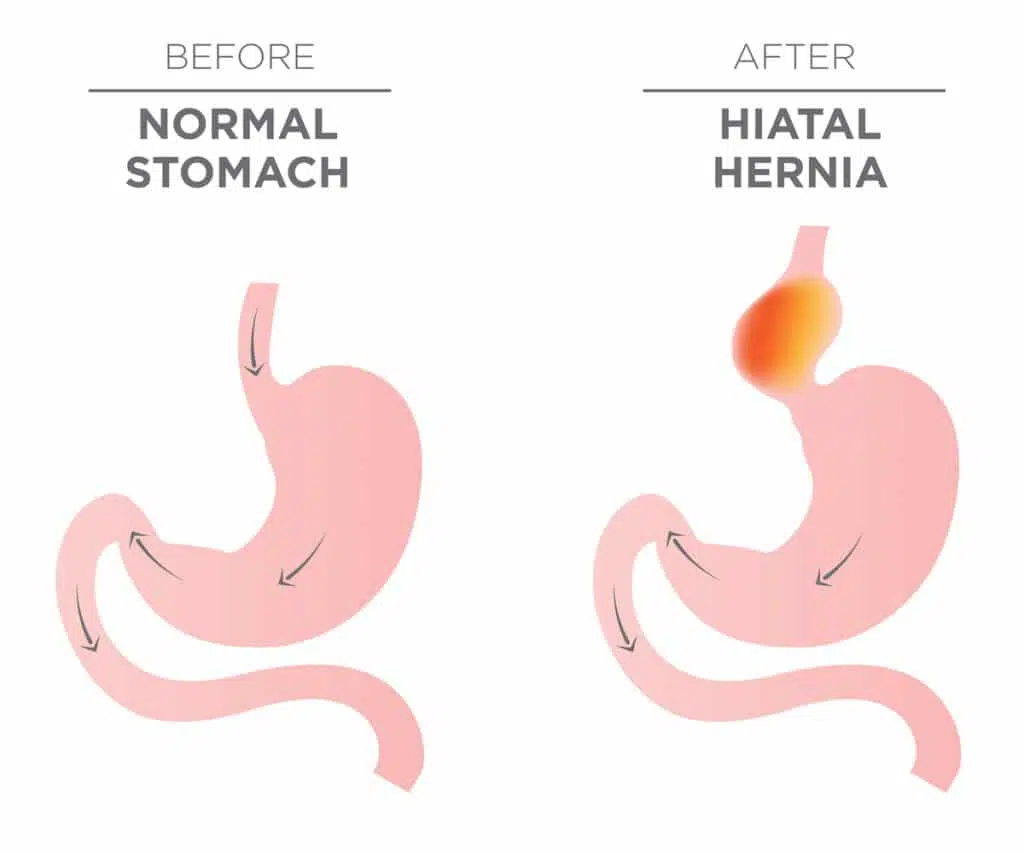
A hiatal hernia develops when part of your stomach bulges through muscles that separate your abdomen from your diaphragm.
Although hiatal hernias do not produce visible lumps like groin hernias do, you may suffer heartburn, acid reflux and chest pain due to acid regurgitated into your esophagus. Most hiatal hernias are seen in adults over 50 who are overweight.
Taking medications to reduce heartburn and making lifestyle changes are the first line of hiatal hernia treatment. Hiatal hernias only become problematic when symptoms such as ulcers, bleeding and esophageal narrowing due to build-up of scar tissue become severe.
For more information about types of hernia in adults, hernia repair and general hernia treatment, call Rolling Hills Medical today to schedule a consultation appointment at 424-250-8699.
